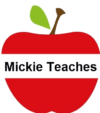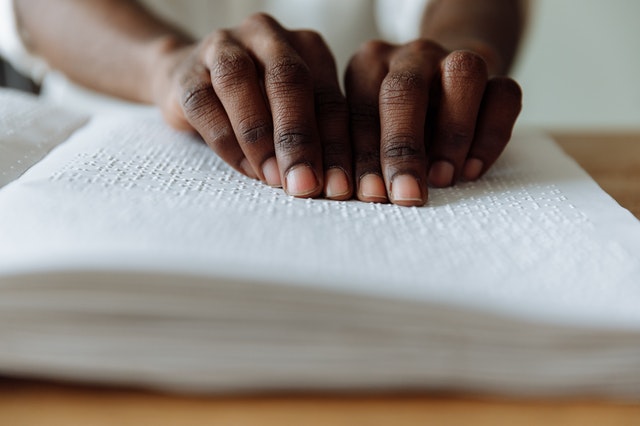Assistive Technology Examples for Students with Disabilities
Updated 9/2020
Students with disabilities often use assistive technology accommodations at college in order to gain equal access. Assistive technology examples come in all shapes and sizes. This post includes several assistive technology examples for students to consider.
Assistive Technology Examples
• Assistive Technology for Hard of Hearing and Deaf
Assistive technology examples such as CART or FM systems help Deaf/deaf students.
For people who are hard of hearing or Deaf, a Sorenson service uses remote interpreters via a videophone. Individuals may be in one location, and the interpreter may be in another state. Some schools have CART reporting available to Hard of Hearing and Deaf students. The CART reporter sits outside a class and listens through headphones to make an exact transcript of the lecture. Their work is the same as a court reporter.
FM systems are also available for individuals who have hearing impairments. FM systems will amplify the sound from room to room. One person wears a small device with a transmitter. Then another person wears a receiver. The person with the receiver can hear what the other person is saying as if they are next to each other. Assistive Technology like FM systems should be available to anyone who visits a museum or enjoys a performance at an auditorium or movie theater.
• Braille/Tactile Diagrams
For someone who is blind, Braille technology is available in personal computers called PacMates that allow individuals to take their own notes using a Braille keypad. Textbooks and tests in school can be produced in Braille for anyone requesting such services. American Federation for the Blind provides updated information on services for the blind and for those with low vision needs.
Several tactile diagrams for science are also available for human anatomy models, cross-sections of the head, brain, nose, mouth, throat, respiratory tract, heart, digestive system, etc. Anyone taking a geography class or studying the globe will benefit from tactile maps. Blind or low vision students can also use read maps that use tactile mapping done by hand using puffy pain or thick glue in a squirt bottle. When dried thoroughly, they create elevated lines that can be traced with a fingertip.
• E-Text Assistive Technology
E-text is now available through many textbook and non-academic publishers. Students who have disabilities may qualify for free copies of their textbooks from Recordings for the Blind and Dyslexic, now called Learning Ally.
The University of Virginia also has thousands of e-books available to students. Kent State University has a non-commercial repository for e-book research, and Project Gutenberg has many e-books that are free of charge. Google has over 500,000 e-books that are free access.
Most publishers want a “proof of purchase” for college textbooks before providing an e-text alternative version of the book. Kindle, The Nook, and Sony all have electronic readers for thousands of books, but interested individuals should also check for text-to-speech software that will allow them to listen to the book as well as read it.
• Physical Disabilities/Wheelchair Users
Wheelchair technology and add-on systems are available for recreational activities like bowling and soccer. Paralympic athletes compete in international Paralympic sporting events. In addition, specialized wheelchair carts with balloon tires are an option for riding over sandy beaches. For those people with limited upper body movement, computer access can be achieved using large trackballs, a foot mouse, sip and puff devices, and a head controlled mouse. Electric eyes can be provided that allow computer access and control through limited head movement and even eye blinks.
• Screen Magnifiers
Personal computers all have accessibility options including a zoom feature for someone with low vision. Zoom Text enlarges print for someone with low vision, and Zoom Text with speech also includes a screen reader. Products from Kurzweil and Freedom Scientific also provide screen readers and magnifiers.
Home magnifiers are not only good for students, but the technology will help those who do fine work with their hands. Their hands can be magnified onto a monitor so that people can see their knitting, writing, or small detail repairs. Camera technology also makes life more accessible to individuals with low vision.
There are a variety of portable desk-top screen magnifiers for someone with low vision. Someone with low vision or mobility disabilities can wear a magnifier on their head. For example, Adobe Ultra Short Arm or Long Arm uses a camera to project information from a distance to a personal computer. Amazon sells small personal electronic magnifiers. Small pocket electronic magnifiers help read small print during shopping. The user can push a button and freeze the image for easier access to the enlarged print. Jordy is an electronic low-vision device worn on the head.
These products are available at various low vision websites and at various prices. In addition, you can get a microscope that is digital. The user hooks it through a computer with special software. The computer is then attached to a projector, and it enlarges the slide onto a wall or table for all to view at once. Math calculators are available that use an overhead to project onto the wall.
• Speech-to-Text Specialized Assistive Technology
Someone who has low vision or hand movement restrictions can use a speech-to-text product like Dragon Naturally Speaking, one of Nuance voice control products. Users can dictate using Nuance voice Controls. There are many digital voice recorders available at various prices. Some more expensive digital recorders can be used with Dragon Naturally Speaking Software, but you will need to check on the various brands and benefits.
Some tablet PCs have a sensitive screen designed to interact with a complementary pen. You can use the pen directly on the screen like a mouse to select, drag, and open files and can be used in place of a keyboard to hand write notes. Tablet PCs should also have speech-to-text technology. Read&Write has a dictation feature called Talk and Type and can be used to write essays, complete exercises, or fill in the blank in pdf forms.
• Text-to-Speech Specialized Assistive Technology
Screen readers are also available for free or purchase, depending upon the product. PERICLES is a FREE chrome extension screen reader that you can download and use to hear content on a page without having to cut and paste the content to use. Students who are blind can use JAWS to listen to everything on their computer.
Zoom Text and Magic also have text readers built into their software.
Electronic pens are available also that can read notes aloud, scan and store text, transfer information to PDAs, Smartphones, and Personal Computers. Some of these pens can also translate English in other languages. The Pulse, Smartpen by Live Scribe lets the user record notes and then replay the written words by tapping on the notes. Notes can be saved to the computer and shared as Flash videos, PDF files, or audio files. Read&write software will read text to you, and is completely adjustable to your desired settings. This software is also available for higher education. Word predictor like Clicker, will help a person put speech into text by selecting from prepared word banks.
Regardless of the disability you are facing, today’s technology will aid you through your day-to-day challenges. Using assistive technology with Universal Design for Learning is a perfect combination.


